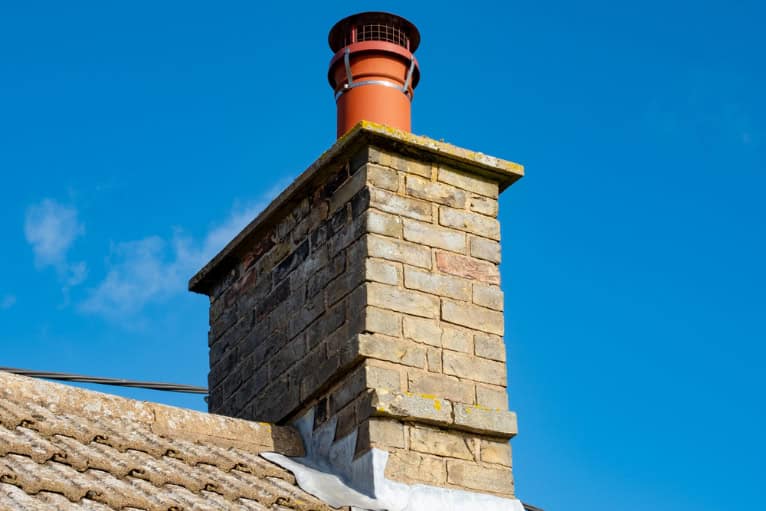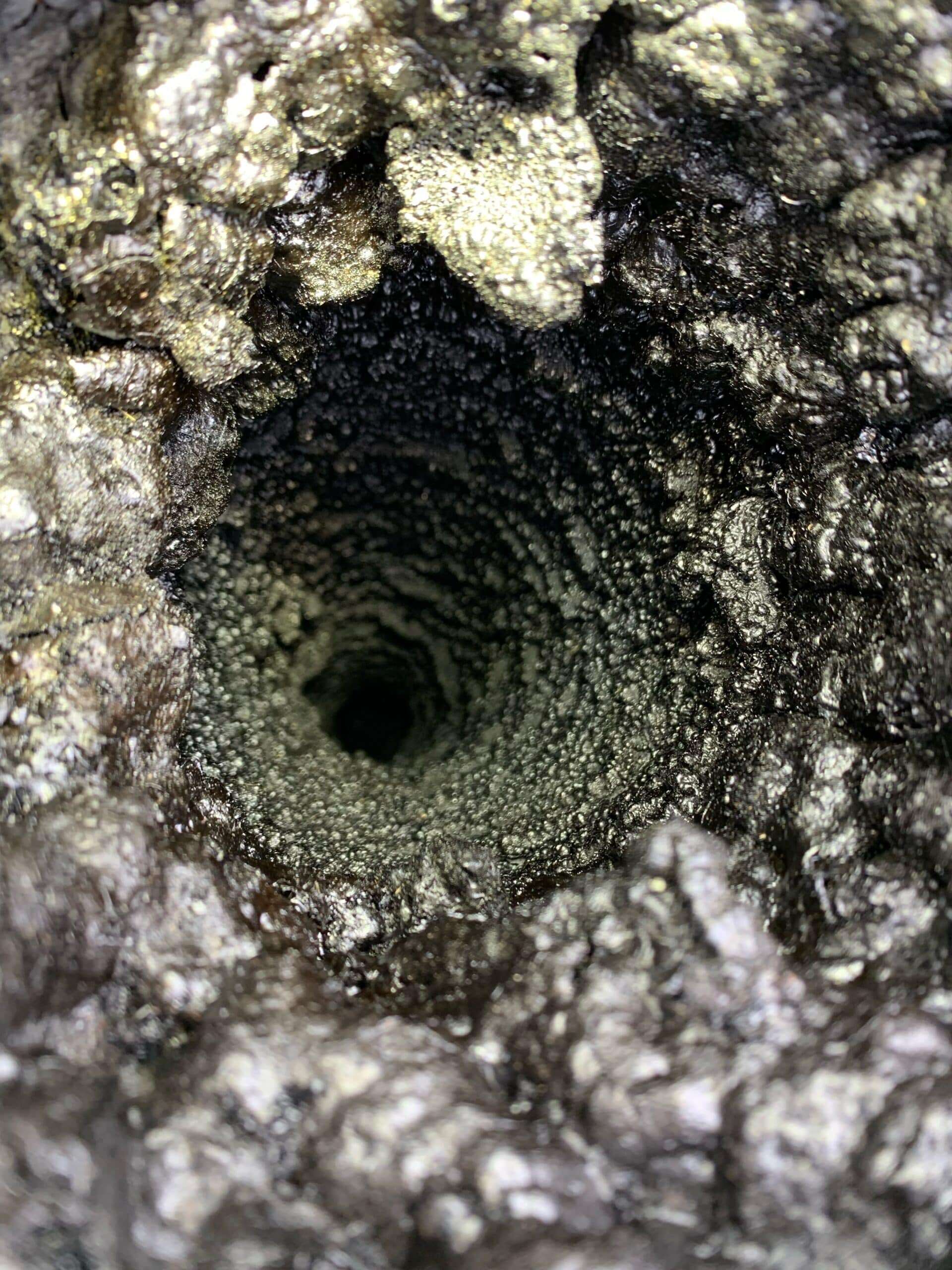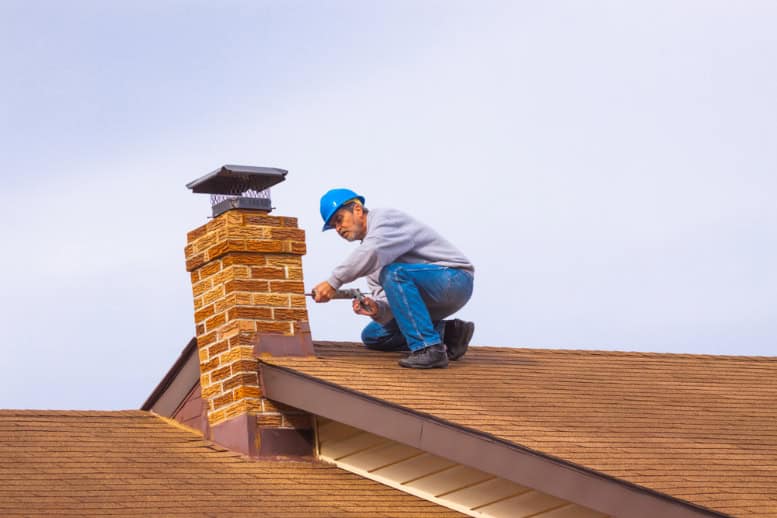
Summary:
The overwhelming majority of chimney fires start with creosote buildup. Creosote is that black, tar-like substance that accumulates inside your chimney when wood burns incompletely.
Every time you light a fire, some level of creosote deposits on your chimney walls. It’s unavoidable. But when those deposits get thick enough, they become extremely flammable. All it takes is the right temperature and airflow conditions, and that creosote ignites.
Most homeowners don’t realize how quickly creosote builds up, especially if you’re burning the wrong type of wood or your fireplace isn’t getting proper airflow. That’s why regular chimney cleaning isn’t just maintenance – it’s fire prevention.

Creosote formation accelerates under specific conditions that many homeowners unknowingly create. Burning wet or unseasoned wood produces more smoke and incomplete combustion, leading to heavier creosote deposits. When wood hasn’t been properly dried for at least six months, it burns cooler and creates more residue.
Your burning habits matter too. Restricting airflow by closing the damper too much or building fires that smolder rather than burn hot creates ideal conditions for creosote buildup. Many people think they’re being efficient by dampening their fire to make it last longer, but they’re actually creating a safety hazard.
The type of wood you burn makes a significant difference as well. Softwoods like pine produce more creosote than hardwoods like oak or maple. If you’ve been burning whatever wood you can find, you might be accelerating the problem without realizing it.
Temperature differences between your hot fire and cold chimney walls also contribute to creosote formation. During Providence County’s cold winters, this temperature differential becomes more pronounced, meaning creosote can build up faster than during milder weather.
Beyond creosote, several other factors can spark chimney fires that catch homeowners off guard. Damaged chimney liners create hot spots where heat can reach combustible materials in your walls or roof structure. Even small cracks in your liner can allow dangerous heat transfer.
Birds’ nests and debris present serious fire hazards that develop when you’re not using your fireplace. During spring and summer, animals often build nests in chimneys, and leaves or other debris can accumulate. When you light your first fire of the season, this material ignites instantly.
Structural problems like cracked masonry or deteriorated mortar joints can allow heat to escape where it shouldn’t. These issues often develop gradually, so your chimney might look fine from the outside while having serious safety problems inside.
Improper installation of chimney caps or screens can also contribute to fire risk. If your cap doesn’t fit correctly or your screen has large gaps, sparks can escape and ignite roof materials or nearby vegetation. During dry periods, even small sparks can start significant fires.
Previous chimney fires that weren’t properly addressed leave your system vulnerable to repeat incidents. Many homeowners don’t realize their chimney has been damaged by a previous fire, especially if it was a slow-burning fire that didn’t create obvious signs.
Want live answers?
Connect with a Certified Chimney Inspections expert for fast, friendly support.
Prevention starts with regular professional chimney cleaning and inspection. The National Fire Protection Association recommends annual inspections, but if you use your fireplace frequently, you might need cleaning more often.
Burning only properly seasoned hardwood makes a dramatic difference in creosote production. Wood should be split and dried for at least six months, with a moisture content below 20%. Well-seasoned wood burns hotter and cleaner, producing less creosote.
Maintaining proper airflow during fires helps ensure complete combustion. Keep your damper fully open while burning, and don’t restrict air intake to make fires last longer.

Annual professional inspections catch problems before they become dangerous. A qualified chimney inspection covers much more than just cleaning – it includes checking your liner, masonry, cap, and overall structural integrity. CSI-certified technicians know exactly what to look for and can spot issues that aren’t visible to homeowners.
The timing of your inspection matters. Schedule it before heating season begins, typically in late summer or early fall. This gives you time to address any problems before you need to use your fireplace regularly. Waiting until you smell something wrong or notice obvious problems means you’re already in a potentially dangerous situation.
Different levels of inspection serve different purposes. A Level 1 inspection works for routine maintenance when nothing seems wrong. Level 2 inspections include video scanning of your chimney interior and are recommended when you’ve had work done, experienced a chimney fire, or are buying or selling your home.
Keep records of your inspections and any work performed. This documentation helps track patterns, ensures you stay on schedule, and provides valuable information if you ever need insurance claims or home sale documentation. Many homeowners insurance policies require regular chimney maintenance, and having proper records can be crucial.
Professional cleaning removes creosote deposits that you simply cannot reach or properly clean yourself. The specialized tools and techniques used by certified professionals ensure thorough cleaning without damaging your chimney liner or other components.
Your daily burning habits have more impact on fire prevention than most homeowners realize. Start fires with proper kindling and newspaper rather than using accelerants like gasoline or lighter fluid, which can cause dangerous flare-ups that damage your chimney system.
Build fires that burn hot rather than smolder. Hot fires consume more of the combustible gases that would otherwise condense as creosote. This means using dry kindling, maintaining good airflow, and not overloading your firebox with too much wood at once.
Never burn treated lumber, painted wood, or trash in your fireplace. These materials produce toxic fumes and can create chemical deposits that are even more flammable than regular creosote. Stick to natural, untreated wood that’s been properly seasoned.
Monitor your fires actively rather than leaving them unattended. This allows you to maintain proper burning conditions and notice any unusual sounds, smells, or smoke patterns that might indicate problems. Many chimney fires start when homeowners aren’t present to notice early warning signs.
Install and maintain proper spark arrestors and chimney caps. These devices prevent sparks from escaping your chimney and keep debris and animals out when you’re not using your fireplace. Make sure screens have openings no larger than 5/8 inch to effectively contain sparks.
Chimney fire prevention comes down to understanding the risks and taking consistent action. Regular professional maintenance, proper burning practices, and staying alert to warning signs keep your family safe and protect your home investment.
The key is not waiting until you notice problems. By the time you smell something wrong or see obvious damage, you’re already dealing with a potentially dangerous situation. Preventive care costs far less than emergency repairs or fire damage.
If you’re concerned about your chimney’s safety or can’t remember your last professional inspection, we provide thorough evaluations and honest recommendations for Providence County homeowners. Don’t leave your family’s safety to chance.